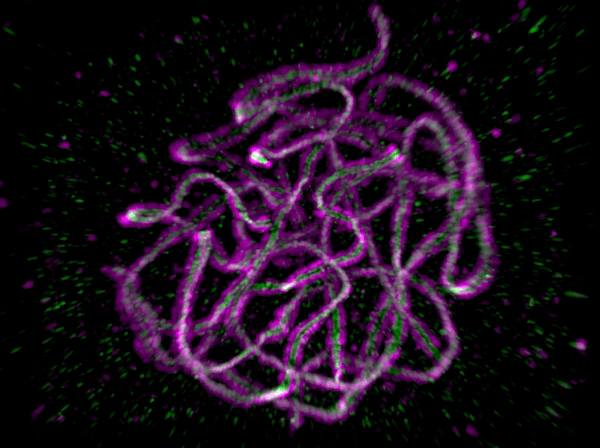The synaptonemal complex limits meiotic crossover and imposes crossover interference
Meiosis, the cell division at the center of sexual reproduction in animals, plants or fungi promotes genetic diversity by shuffling parental chromosomes. The exchange points between chromosomes are called crossovers. This is a source of diversity between sibling; you differ (genetically) from your brothers and sisters because of meiosis. As observed more than a century ago by the first geneticists, crossovers inhibit the formation of another crossover nearby on the same chromosome, limiting the number of exchanges between chromosomes. This phenomenon is called crossover interference, and its mechanism remains mysterious more than one century later. Another intriguing observation is the marked difference in male and female crossover rates observed in many species, including humans and the plant model used in this study, Arabidopsis thaliana.

The synaptonemal complex (green) connect the two homologous chromosomes (purple). The organisation of the synaptonemal complex is revealed with super-resolution microscopy.
A team in the department of Chromosome Biology at MPIPZ, using a combination of genome editing, super-resolution microscopy and genomics in collaboration with INRAE of Versailles France, explored the function of the synaptonemal complex, a structure that zips homologous chromosomes together during meiosis They show that the synaptonemal complex is dispensable for crossover formation but is essential for crossover interference. They propose that the interference signal, that inhibits crossover formation nearby a first crossover, propagates along this specific structure. Further, in absence of the synaptonemal complex, crossover frequencies become identical in both sexes showing that variation of interference imposed by the synaptonemal complex is at the origin of the difference in crossover rates between males and females. This study represents a major progress in our understanding of one of the oldest mysteries of genetics.
